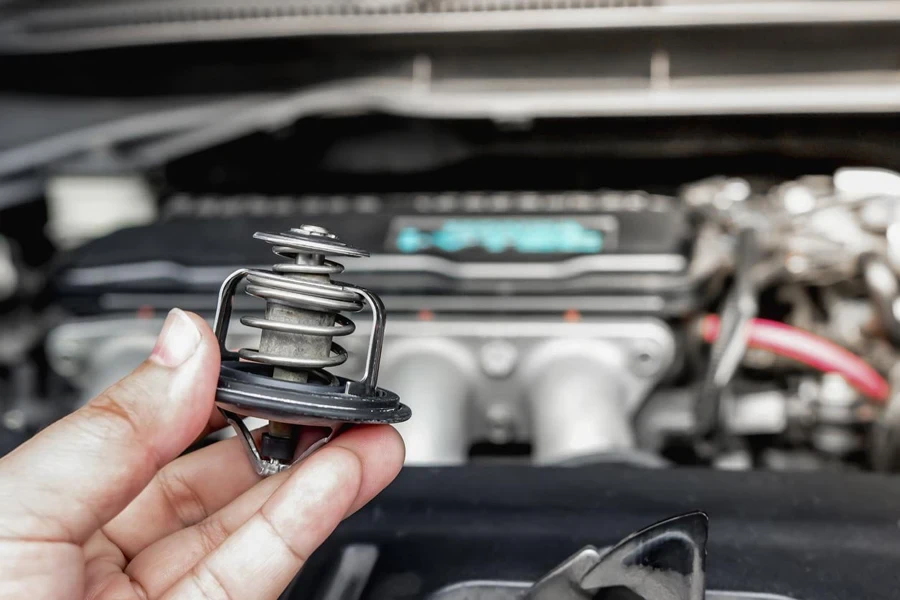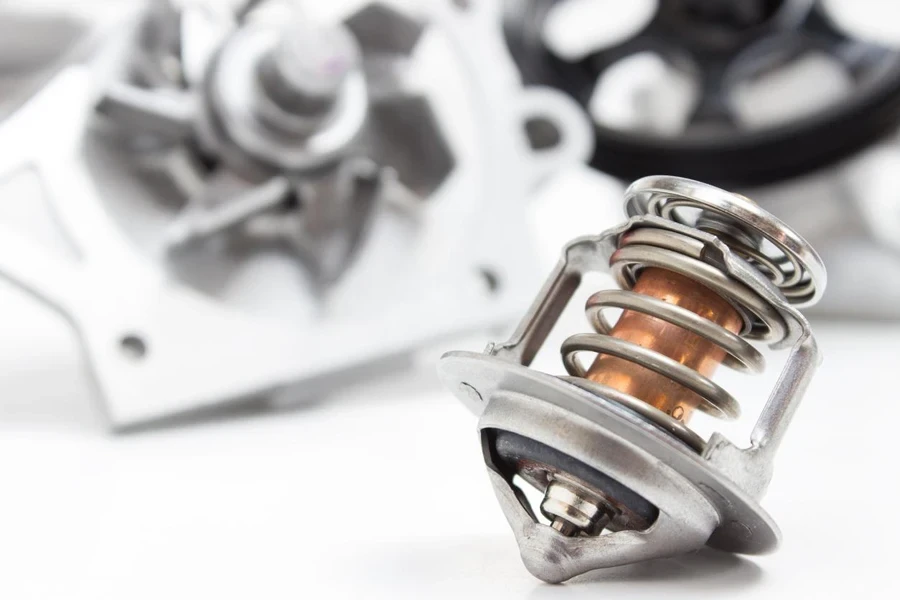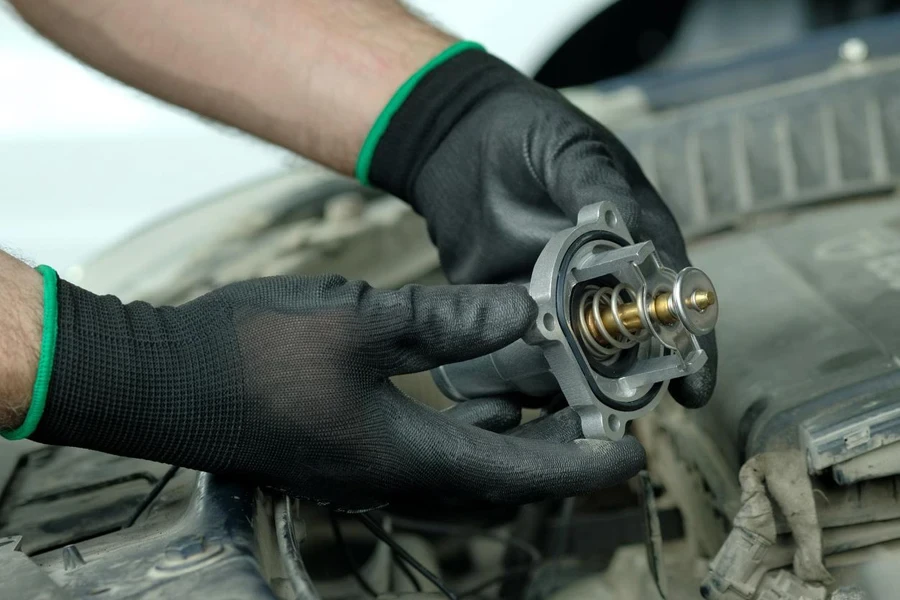Table of Contents
1. Introduction
2. Understanding Engine Thermostats: Types and Functions
3. The Current Engine Thermostat Market: Trends and Insights
4. Key Considerations When Selecting an Engine Thermostat
5. Top Engine Thermostat Models in 2025: Features and Recommendations
6. Conclusion
Introduction
Engine thermostats are essential components in maintaining optimal engine performance and efficiency. By regulating coolant flow, they ensure engines operate within their ideal temperature range, preventing overheating or underperformance. A properly functioning thermostat enhances fuel efficiency, prolongs engine life, and reduces maintenance costs. As advancements in vehicle technology continue to evolve, selecting the right thermostat has become increasingly important for meeting specific performance requirements. In 2025, understanding key features, compatibility, and market trends can help professionals make informed decisions about this critical part, ensuring vehicles achieve peak performance under diverse conditions.
Understanding engine thermostats: Types and functions

Types of engine thermostats: Standard vs. performance thermostats
Engine thermostats are primarily divided into standard and performance types. Standard thermostats are built for everyday vehicles, maintaining engine temperatures between 180°F to 195°F. These are ideal for general driving conditions, providing consistent and reliable functionality. Performance thermostats, however, are designed for high-performance vehicles or specialized applications. They operate at specific temperature ranges to enhance efficiency and performance, making them suitable for racing, heavy towing, or extreme environments.
How thermostats regulate engine temperature and their impact on engine health
An engine thermostat plays a vital role in regulating temperature by controlling the flow of coolant. It remains closed when the engine is cold, enabling it to warm up quickly. As the engine reaches its optimal operating temperature, the thermostat opens, allowing coolant to circulate and dissipate heat. This process prevents overheating, improves fuel combustion, and safeguards engine components from wear. Proper temperature regulation ensures better efficiency, reduced emissions, and prolonged engine life.
Compatibility with vehicle models: Choosing thermostats for specific needs

Selecting the right thermostat requires compatibility with the vehicle’s engine and cooling system. Standard thermostats are suitable for most passenger vehicles, while performance models cater to engines with higher power or unique demands. Ensuring the thermostat matches the engine’s specifications and cooling capacity is critical to avoid system inefficiencies. Specialized vehicles or those operating in extreme conditions benefit greatly from performance thermostats tailored to their requirements.
The current engine thermostat market: Trends and insights
The market overview for engine thermostats in 2024
According to Dataintelo, the global engine thermostat market was valued at approximately US$1.50 billion in 2023 and is projected to reach US$2.21 billion by 2032, growing at a 4.5% CAGR. In 2024, this growth was largely driven by the rising demand for fuel-efficient vehicles and continuous advancements in automotive technology. Emerging economies contributed significantly to market expansion through increased vehicle production and heightened demand for replacement parts. Furthermore, the need for thermostats that regulate engine temperature while adhering to strict emissions and fuel efficiency standards became increasingly evident.
The 2024 market also highlighted a strong focus on sustainability, with manufacturers emphasizing thermostats that enhance engine efficiency and reduce emissions. As environmental regulations tightened globally, the demand for advanced thermostats with precise temperature control grew, supporting the development of innovative technologies designed to meet these evolving requirements.
Technological advancements: Smart thermostats and their role in modern vehicles

Advancements in thermostat technology have led to the development of smart thermostats, which integrate seamlessly with vehicle systems. These thermostats are equipped with sensors and electronic controls that allow them to dynamically adjust to engine needs, optimizing temperature regulation under various driving conditions. This real-time adaptability makes them ideal for modern vehicles that demand precise temperature control for optimal performance.
Smart thermostats have become particularly important in electric and hybrid vehicles, where efficient thermal management is essential for maintaining battery health and overall vehicle performance. These thermostats work in tandem with advanced cooling systems to ensure that the temperature across all components remains stable, thus improving energy efficiency and extending the lifespan of critical systems.
Global demand: Key regions and their thermostat preferences
Global demand for engine thermostats is shaped by regional differences in vehicle preferences and climate conditions. In North America and Europe, the market is increasingly leaning towards smart thermostats due to stricter environmental regulations and the popularity of high-performance vehicles. These regions also favor thermostats that can handle higher performance demands, such as those in trucks and sports cars.
In contrast, emerging markets in Asia-Pacific, such as China and India, show strong demand for standard thermostats, driven by the rapid growth of vehicle production and a preference for affordable, reliable parts. However, as awareness of advanced technologies grows, the market in these regions is gradually shifting towards more sophisticated thermostat models. Meanwhile, in Latin America and the Middle East, thermostats that can withstand extreme temperatures are highly preferred, as durability remains a key consideration for vehicles operating in harsh climates.
Key considerations when selecting an engine thermostat

Manufacturer recommendations: Why following factory guidelines matters
Choosing a thermostat based on manufacturer recommendations ensures the engine operates within its intended temperature range. This prevents performance issues, reduces fuel inefficiency, and protects engine components from damage. Factory-recommended thermostats are also designed to work seamlessly with specific engine designs, avoiding potential compatibility issues.
Engine specifications: Matching thermostat temperature ratings to engine needs
Thermostats must match the engine’s required temperature range to maintain efficiency. Standard thermostats are suitable for most vehicles, while performance or specialized engines may need custom temperature ratings. Using the wrong thermostat can lead to overheating or undercooling, negatively impacting engine health and performance.
Material quality and durability: Ensuring long-lasting performance
Durable materials like stainless steel or brass help thermostats resist corrosion and handle frequent temperature changes. High-quality thermostats last longer and reduce the risk of system failure, especially in demanding environments. Cheaper materials may result in frequent replacements and increased maintenance costs.
Environmental factors: Temperature extremes and their effects on thermostat performance
In cold climates, thermostats that warm engines quickly are vital to reducing startup strain. In hot or heavy-duty conditions, thermostats with enhanced cooling capabilities are better suited to prevent overheating. Selecting a thermostat tailored to the operating environment ensures reliable performance.
Top engine thermostat models in 2025: Features and recommendations

Leading models in the market: Performance, reliability, and feedback
In 2025, high-performing engine thermostats are distinguished by their ability to maintain precise engine temperatures under various conditions. Leading models are designed to offer consistent performance and enhanced reliability, whether in standard passenger vehicles or heavy-duty applications. These thermostats are favored for their efficient operation, helping to optimize engine health and fuel economy.
Reliability remains a key factor, with advanced designs and durable materials ensuring long-term performance. Industry feedback emphasizes the importance of thermostats that respond quickly to temperature changes, ensuring engines operate at their most efficient levels, even in challenging driving environments.
Features to look for in high-quality thermostats: Efficiency, build quality, and price
The best engine thermostats in 2025 are characterized by precise temperature regulation, allowing engines to perform efficiently while reducing fuel consumption and emissions. Features like quick response to temperature shifts and stable operation are essential for maintaining engine reliability.
Build quality is another critical feature to consider. Thermostats made from corrosion-resistant materials, such as stainless steel or brass, offer superior durability and withstand frequent thermal cycling. While price ranges vary, thermostats with advanced designs and durable construction often provide the best long-term value. Selecting a thermostat that balances advanced features with affordability ensures optimal performance and cost-efficiency.
Best thermostat options: What makes them stand out in 2025
The top-performing thermostats in 2025 stand out for their precision engineering and ability to adapt to diverse engine requirements. Advanced manufacturing processes and rigorous testing ensure these products meet high standards of reliability and compatibility.
These models often incorporate innovative features, such as efficient temperature control mechanisms and robust construction to handle extreme conditions. Thermostats designed for seamless integration with a vehicle’s cooling system are particularly valued, offering improved efficiency and minimal maintenance needs.
Price vs. quality: Finding the right balance
Balancing price and quality is a crucial consideration when selecting an engine thermostat. Low-cost options may initially seem economical but often compromise on durability and performance, leading to frequent replacements and higher long-term costs. On the other hand, higher-quality thermostats, while more expensive upfront, typically offer better performance, longevity, and reliability.
Selecting a thermostat that aligns with engine specifications and operational needs ensures better value over time. Investing in durable, high-performing thermostats reduces the risk of engine issues and maintenance costs, making them a practical choice for businesses focused on efficiency and reliability.
Conclusion
Selecting the right engine thermostat is crucial for maintaining vehicle performance, ensuring optimal temperature regulation, and protecting engine components from damage. In 2025, advancements in thermostat technology and a growing focus on efficiency and durability make it essential to prioritize features like material quality, precise temperature control, and compatibility with specific engine requirements. By considering factors such as environmental conditions and long-term performance, businesses can make informed decisions that balance cost and quality, ultimately supporting engine reliability and reducing maintenance costs. Proper selection is not just a technical necessity but a strategic approach to enhancing operational efficiency.



